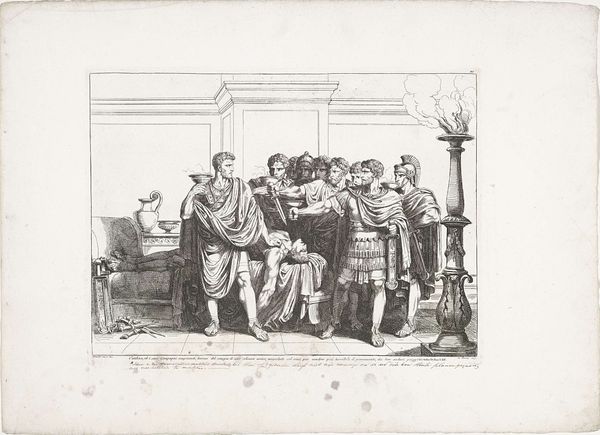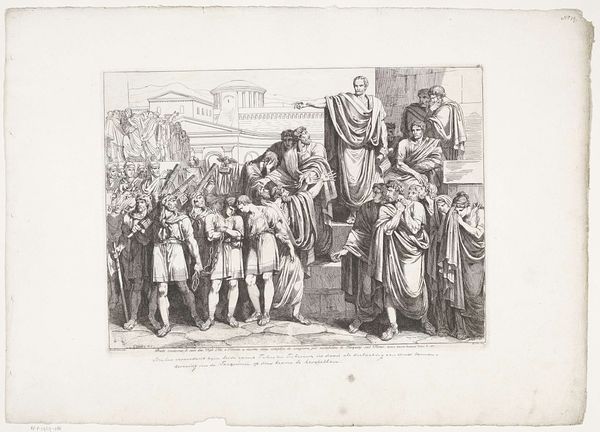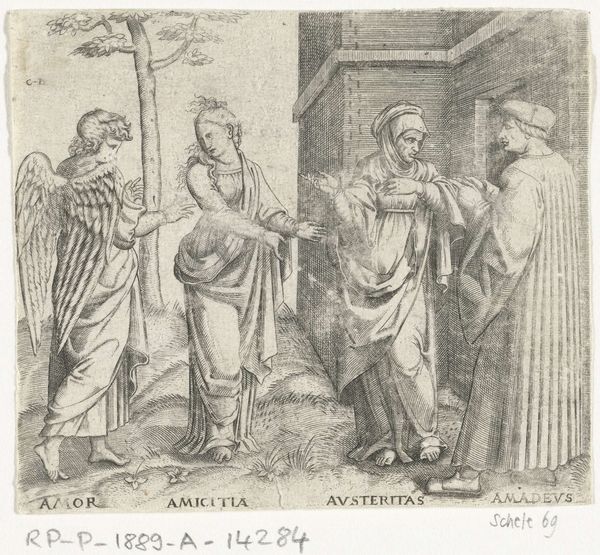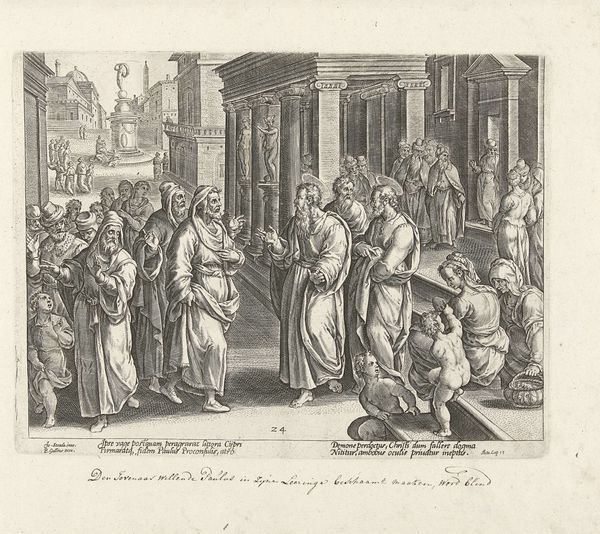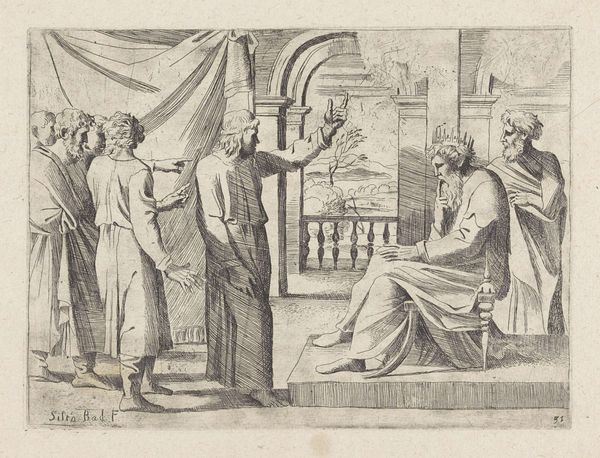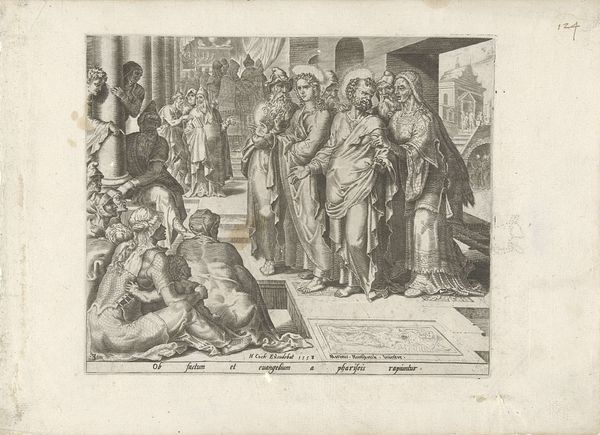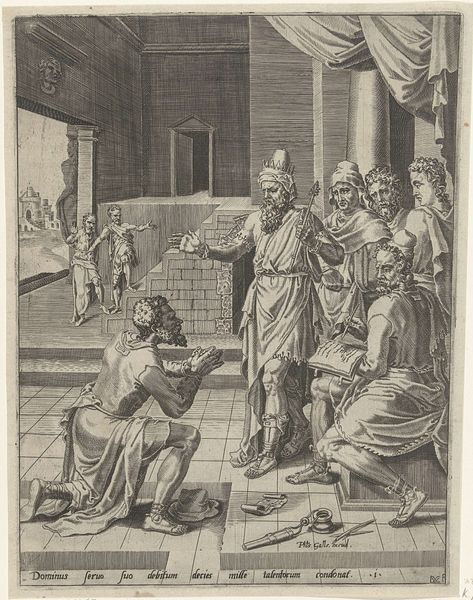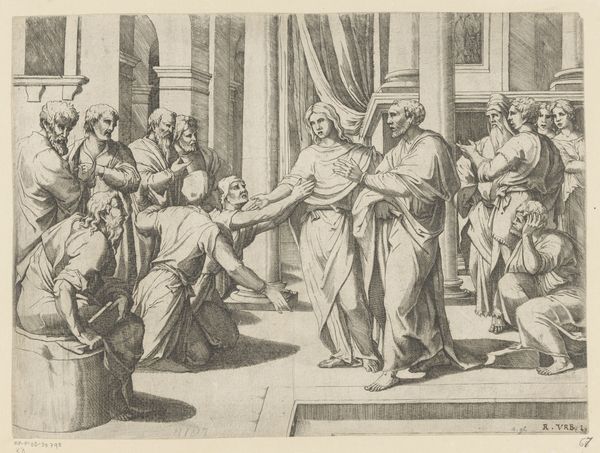
print, engraving
#
neoclacissism
# print
#
figuration
#
history-painting
#
engraving
Dimensions: height 316 mm, width 427 mm
Copyright: Rijks Museum: Open Domain
Curator: This engraving by Bartolomeo Pinelli, created in 1818, depicts the dramatic scene of "Marco Papirio Killing a Gaul." Editor: My immediate reaction is drawn to the striking use of line. The starkness of the black and white contrasts create a harsh, almost brutal feel. Curator: Pinelli situates the scene within a precise historical moment and clearly aims to portray a Roman triumph with a Neoclassical emphasis on morality and the social order. He produced many prints which catered to a market interested in these images as historical documents. Editor: Interesting you mention the Neoclassical aesthetic. Note the relatively plain clothing contrasting with the highly-detailed renderings of the columns and Roman garments. How did the socio-political landscape of Rome, its economic factors and workshops, influence Pinelli's choice of this exacting medium to execute such complex works? Curator: Printmaking during this era served as a very accessible medium, particularly for spreading political or moral narratives. Pinelli no doubt made strategic use of prints to ensure wide visibility among citizens in Italy, using history to solidify patriotism. Editor: True, prints were easily distributed, but I also note the political nuances. Here, an engraver uses line work in his printing shop to shape how Rome presents its historical narrative. How were these printed accounts received? Did they feed existing popular sentiments, or actively shape them, perhaps legitimizing existing authority? Curator: Both, probably! These images became integral to understanding Rome’s idealized past, impacting cultural identity and informing the aspirations of the Papal States, especially following the Napoleonic era. It reminds us that artworks also are powerful political instruments. Editor: Absolutely, seeing Pinelli's engraving, considering the production and dissemination, unveils layers about 19th-century social values and institutional influences in Rome. Curator: Agreed. And from a material perspective, looking closer at printmaking uncovers critical social dynamics tied to the economy. Editor: Certainly does.
Comments
No comments
Be the first to comment and join the conversation on the ultimate creative platform.

